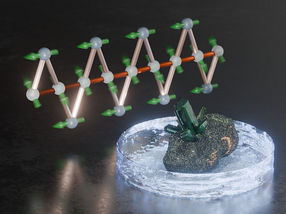Ozone controls failing to protect human health and the environment
Existing controls are failing to reduce the air pollutant ground level ozone to a level that protects human health and the environment, and climate change will make the challenge harder, warns a major new report from the Royal Society the UK national academy of science.
The report Ground-level ozone in the 21st century highlights that in the UK and other parts of the Northern Hemisphere, background concentrations of ozone have increased by six per cent (two parts per billion in the atmosphere) per decade, since the 1980s.
Policies in the EU, Japan and America have successfully reduced the occurrence of very high peaks of ozone in these regions, which occur for short periods under hot, sunny, stagnant weather conditions. During these episodes ozone concentrations can be particularly dangerous, exceeding 100 parts per billion (ppb).
However, ozone is now believed to have an effect on health, food crops and the environment at the background levels currently experienced by people in the UK, and most industrialized countries of the world, on a daily basis (35 40ppb).
Professor David Fowler, Chair of the Royal Society's ground level ozone working group, said: "Ozone is a global traveller and one of the most pervasive of air pollutants. Weather systems and jet streams transport ozone, and the pollutants that lead to its formation, often far from their point of origin. Here in the UK, for example, we receive most of our ozone from outside of Europe.
"Until we have a globally coordinated approach that addresses the international nature of the problem, national and even regional level controls are unlikely to deliver the kind of reductions that are necessary to protect human health and the environment."
Ozone is formed when sunlight reacts with pollutants and naturally occurring chemicals in the air. These chemicals come from sources such as vehicle exhaust fumes and forest fires. International shipping is a growing source of these pollutants and the sector currently has poor emission controls.
Children, the elderly and asthmatics are particularly vulnerable to ozone which affects the lungs, nose and eyes. In 2003 an estimated 1582 UK deaths were attributed to ozone. Taking future emissions of pollutants and climate change into account, this is projected to rise by 51 per cent to 2391 in 2020. However, these figures are based on an assumption that ozone has an impact on health only above 35 ppb and so are considered to be conservative because ozone is now known to have an effect below this level.
Ozone can reduce the yield and affect the nutritional quality of major crop species including wheat, rice and soybean. With current concentrations of ozone, significant impacts to crops in Europe and North America have been observed. In the EU in 2000 an estimated 6.7 billion was lost due to impacts on arable crops.
Crop losses due to ground level ozone are likely to increase over the next two to three decades. In some rapidly developing regions such as South Asia the impact of ozone on the production of staple crops such as wheat and rice may present a significant threat to regional food security. Modelling studies have estimated that crop yield losses for India in 2000 were about 13 per cent for wheat, 6 per cent for rice and 19 per cent for soya bean. Experimental data suggest these figures are significant underestimates.
The report highlights that climate change will make it harder to reduce levels of ground level ozone. This is because the changes in climate increase ozone production in the polluted regions of the world.
Furthermore, increased levels of ozone will exacerbate climate change because it is the third most important greenhouse gas contributing to global warming. Ozone also reduces the ability of plants to remove carbon dioxide from the atmosphere, which may lead to further increases in the levels of atmospheric carbon dioxide.
Professor Fowler said: "Ozone has become a global pollutant, with direct effects on human health, crop production, ecosystems and climate, yet control strategies are country or region based. A coordinated global strategy bringing ozone into international frameworks for controlling air pollutants and greenhouse gases is required. The reduction of methane emissions would for example contribute both to the reduction of climate change and ozone pollution, and all of the associated ecological and human health effects."
When ozone occurs high within the atmosphere, in the stratosphere, it acts as a protective sunscreen that shields the earth from high levels of ultraviolet radiation from the sun. However, in the lower atmosphere the troposphere and at ground level ozone it is a major pollutant.



























































